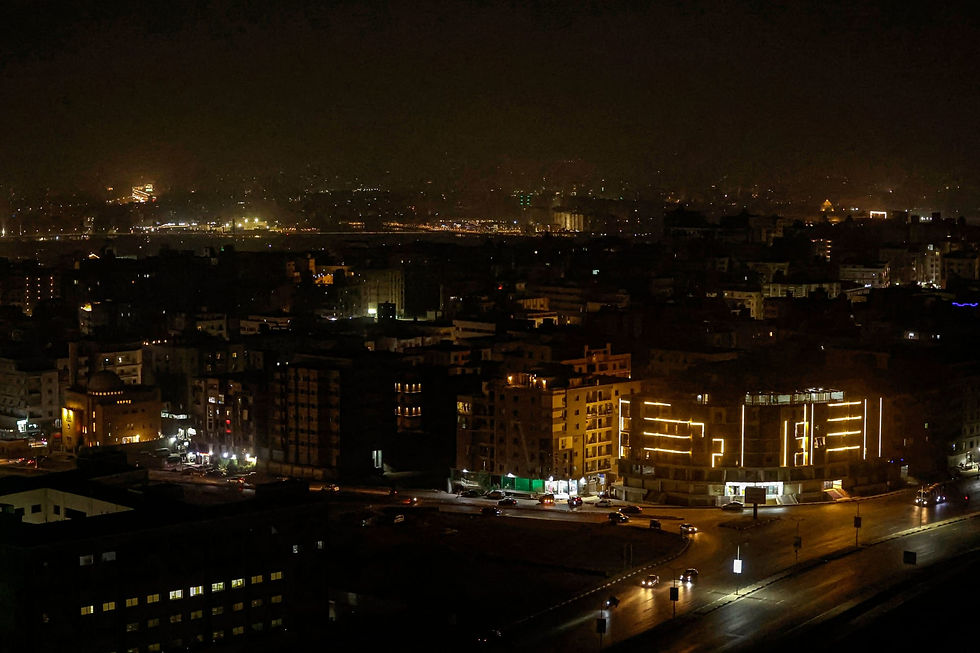Egypt: Record Electricity Consumption Amidst Frequent Outages in Giza
- Next News
- Jul 30
- 3 min read
Egypt has recently witnessed an unprecedented surge in electricity consumption, hitting a record high of 39.4 thousand megawatts on Sunday. This marks an increase of 1400 megawatts compared to the peak recorded last year. This surge coincides with a severe heatwave gripping the country, with temperatures in Greater Cairo reaching 41 degrees Celsius in the shade coupled with high humidity, leading to a significant increase in electrical loads. While the Ministry of Electricity affirmed the national grid's capacity to absorb these unprecedented loads, several areas in Giza experienced recurrent power outages, along with water supply interruptions, due to a technical fault at the main Giza Gold Island power station.

Reasons for Increased Consumption and Grid Challenges
Experts attribute the substantial increase in consumption primarily to a rise in household electricity use, driven by the operation of cooling appliances such as refrigerators and air conditioners to combat the soaring temperatures. Professor Hafez Salmawy, Professor of Energy Engineering at Zagazig University and former CEO of the Egyptian Electric Utility and Consumer Protection Regulatory Agency, explained that household consumption accounts for the largest share of Egypt's total electricity consumption, reaching 36.3% last February, followed by factories at 29.4%. Water and sanitation stations' consumption is also affected by high temperatures, consuming approximately 4% of the total electricity.
Although Egypt's nominal electricity generation capacity exceeds 59 thousand megawatts, with an additional 31 thousand megawatts added between 2014 and 2022, the national grid faces challenges in securing the necessary gas for power plant operation. With declining domestic gas production, the country bears a high cost for importing gas from abroad, adding financial pressure on the sector. Salmawy links the continued rise in consumption to the persistence of the heatwave, emphasizing that while the grid can handle the increased consumption, it faces a financial challenge in securing additional funding for gas imports.
Government Efforts to Address Challenges and the Future of Renewable Energy
Prior to the summer season, the Egyptian government held several meetings to devise a plan to address the rising loads and increased demand for electricity. This plan focused on ensuring the necessary fuel supply for power generation plants, while also altering operational patterns to reduce fuel consumption and bring consumption rates below 65 grams of equivalent fuel per kilowatt. The plan also emphasizes diversifying electricity generation sources, increasing reliance on renewable energies, and maximizing their returns through energy storage technologies and expanding the establishment of grid-connected and off-grid storage stations to ensure grid stability during peak hours.
Egypt aims to become a regional energy hub, connecting energy markets in Africa, Europe, and the Middle East. To achieve this, Egypt has existing electricity interconnection projects with neighboring countries such as Sudan, Libya, and Jordan, and is working on another project with Saudi Arabia. It is also studying two interconnection projects with Europe via Greece and Italy.
Egypt is highly committed to developing its renewable energy sector, aiming to reach 42% of total generated energy by 2030 and 65% by 2040. The Electricity Law was issued in 2015 to pave the way for the full liberalization of the electricity market, allocate land for renewable energy projects, and sign long-term power purchase agreements. Egypt's current renewable energy capacity, including solar, wind, and hydropower, stands at 8031 megawatts. The country aims to add 15 gigawatts of renewable energy to the grid, exceeding 22 thousand megawatts by 2030.
Despite the national grid's nominal capacity to withstand increased consumption, Hafez Salmawy believes that this does not prevent certain areas from experiencing outages due to intense demand. He asserts that these faults can be quickly addressed through the maintenance of transformers and substations.









Comments